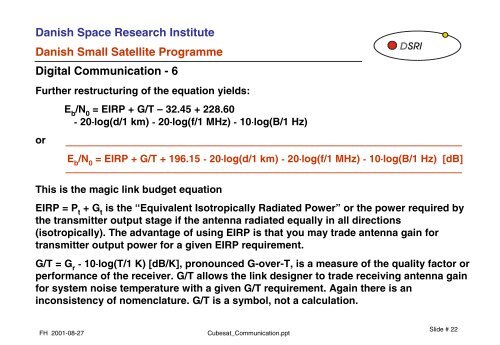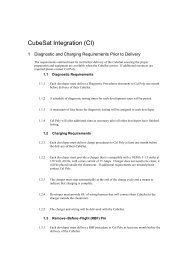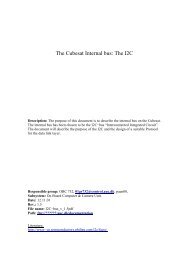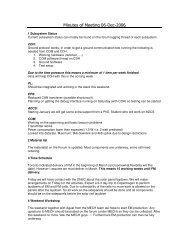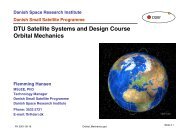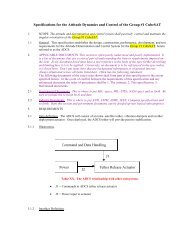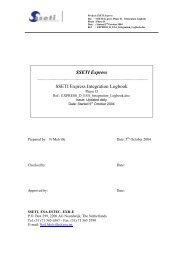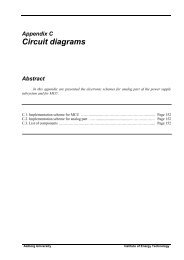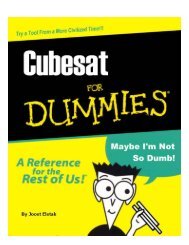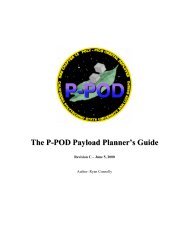DTU Satellite Systems and Design Course CubeSat Communication
DTU Satellite Systems and Design Course CubeSat Communication
DTU Satellite Systems and Design Course CubeSat Communication
You also want an ePaper? Increase the reach of your titles
YUMPU automatically turns print PDFs into web optimized ePapers that Google loves.
Danish Space Research Institute<br />
Danish Small <strong>Satellite</strong> Programme<br />
Digital <strong>Communication</strong> - 6<br />
Further restructuring of the equation yields:<br />
or<br />
E b /N 0 = EIRP + G/T – 32.45 + 228.60<br />
- 20⋅log(d/1 km) - 20⋅log(f/1 MHz) - 10⋅log(B/1 Hz)<br />
E b /N 0 = EIRP + G/T + 196.15 - 20⋅log(d/1 km) - 20⋅log(f/1 MHz) - 10⋅log(B/1 Hz) [dB]<br />
This is the magic link budget equation<br />
EIRP = P t + G t is the “Equivalent Isotropically Radiated Power” or the power required by<br />
the transmitter output stage if the antenna radiated equally in all directions<br />
(isotropically). The advantage of using EIRP is that you may trade antenna gain for<br />
transmitter output power for a given EIRP requirement.<br />
G/T = G r - 10⋅log(T/1 K) [dB/K], pronounced G-over-T, is a measure of the quality factor or<br />
performance of the receiver. G/T allows the link designer to trade receiving antenna gain<br />
for system noise temperature with a given G/T requirement. Again there is an<br />
inconsistency of nomenclature. G/T is a symbol, not a calculation.<br />
FH 2001-08-27 Cubesat_<strong>Communication</strong>.ppt<br />
Slide # 22


